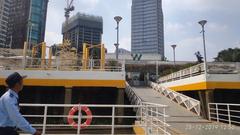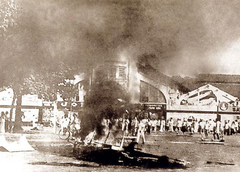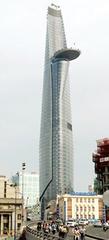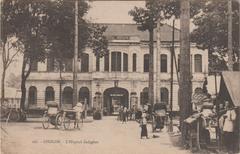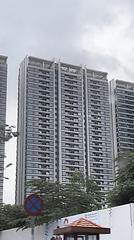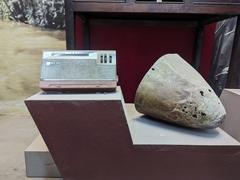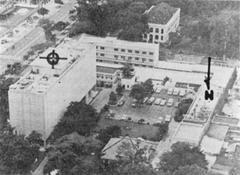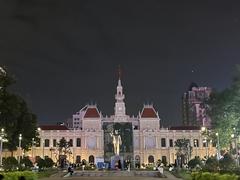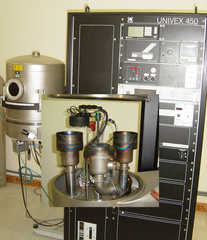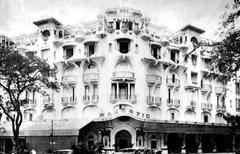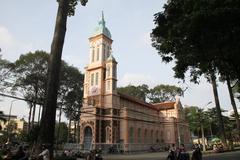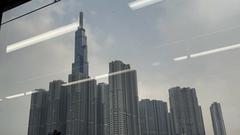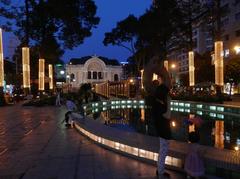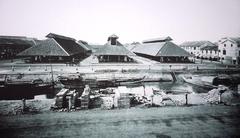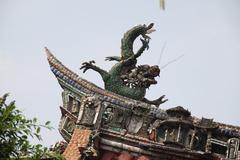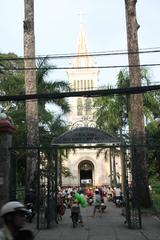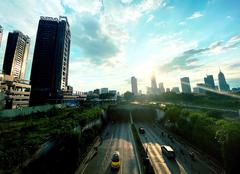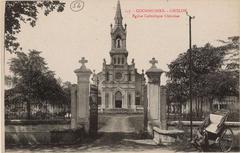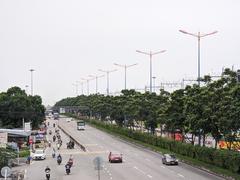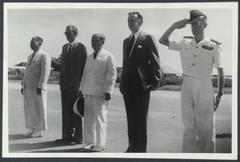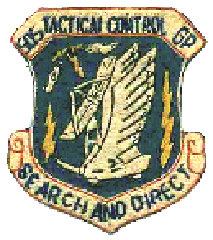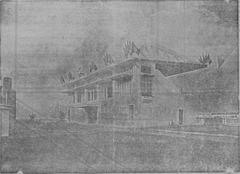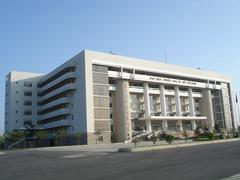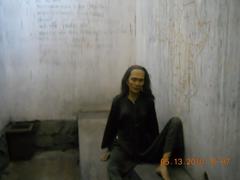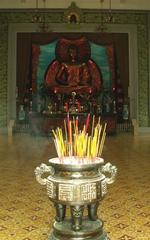Dong Dien Bridge Visiting Hours, Tickets, and Travel Guide: Ho Chi Minh City Historical Sites
Date: 14/06/2025
Introduction
Dong Dien Bridge is a vital yet often underappreciated landmark in Ho Chi Minh City, Vietnam. It exemplifies the city’s dynamic blend of historical heritage and rapid urban development. As a key connector over the Dong Dien River—a distributary of the Nha Be River system—the bridge links southern districts such as Nha Be and Binh Chanh, supporting economic growth and urban expansion. Although less famous than Saigon or Thu Thiem Bridges, Dong Dien Bridge holds an essential place in the city’s transportation network and cultural landscape.
Constructed mainly in the late 20th and early 21st centuries, the bridge is engineered for both vehicular and pedestrian traffic, with resilience against the city’s tropical monsoon climate and seasonal flooding. It not only facilitates movement across the city but also stands as a symbol of the harmonious coexistence between traditional riverine lifestyles and modern urbanization. The bridge is closely tied to local livelihoods, including floating markets and boat travel, and is integrated into major infrastructure projects like Ho Chi Minh City’s Ring Road 3.
Open 24 hours with no entry fee, Dong Dien Bridge appeals to urban explorers, photographers, and those seeking authentic cultural experiences. Its scenic vistas, especially at sunrise and sunset, offer a unique perspective on the balance between old and new in Ho Chi Minh City. While official tours are rare, the bridge is often included in broader southern district excursions and comes alive during festivals and boat races.
As Ho Chi Minh City advances its modernization agenda, ongoing upgrades and maintenance of Dong Dien Bridge highlight the city’s commitment to sustainable infrastructure and climate resilience. Whether you’re a commuter, an investor, or a traveler in search of less-discovered destinations, Dong Dien Bridge is a window into the evolving story of one of Southeast Asia’s most vibrant metropolises (Lao Dong News, My Vietnam Tours, Vietnam Online).
Table of Contents
- Introduction
- Historical Background
- Visiting Dong Dien Bridge: Practical Information
- Dong Dien Bridge in the Transportation Network
- Future Prospects and Urban Planning
- Frequently Asked Questions (FAQ)
- Visuals and Multimedia
- Conclusion
Historical Background
Origins and Development
Dong Dien Bridge connects the southern districts of Ho Chi Minh City across the Dong Dien River. The area was once marshy and agricultural, with limited connections to the city center. The bridge’s construction in the late 20th century aimed to bridge this gap, facilitating both urban expansion and economic integration.
Construction and Engineering
A modern concrete structure, Dong Dien Bridge was designed to support vehicles and pedestrians while withstanding the region’s heavy rains and floods. Its clearance allows for the continued passage of local boats, honoring the river’s role in community life.
Urban and Economic Impact
The bridge has been instrumental in decentralizing Ho Chi Minh City, supporting new residential and industrial developments. By improving access between the city center and outlying districts, it has reduced congestion, promoted investment, and enabled more balanced urban growth.
Cultural and Social Significance
For the people of Nha Be and Binh Chanh, Dong Dien Bridge is a symbol of opportunity and connection. It links traditional lifestyles—such as floating markets and river trade—with the city’s modern pulse, reflecting Ho Chi Minh City’s evolving spirit.
Upgrades and Maintenance
Ongoing improvements have included reinforcing foundations, widening lanes, and upgrading lighting and signage. These measures are part of broader initiatives to strengthen the city’s infrastructure and adapt to climate challenges.
Visiting Dong Dien Bridge: Practical Information
Visiting Hours
Dong Dien Bridge is open to the public 24/7, offering access at any time of day or night. Early mornings and evenings provide the most picturesque river views.
Entry Fees
There are no entry fees or tickets required to visit or cross the bridge; it is free for all visitors.
Accessibility
The bridge features sidewalks for pedestrians and is suitable for bicycles. While generally accessible, some approaches may have uneven surfaces. Wheelchair users should check conditions in advance.
Guided Tours and Events
Though there are no exclusive tours for Dong Dien Bridge, it is sometimes featured in city excursions of the southern districts. The bridge is also a focal point during local festivals and boat races, offering lively cultural experiences.
Photographic Spots
Capture sunrise or sunset from the bridge for the best light and scenic contrasts. The juxtaposition of traditional boats and modern cityscapes makes for compelling photography.
Dong Dien Bridge in the Transportation Network
Dong Dien Bridge is a critical part of Ho Chi Minh City’s transport system, connecting major roads and highways and facilitating travel to the Mekong Delta and southern provinces. It is integral to Ring Road 3, which is designed to divert heavy traffic from the city center and improve regional mobility (Lao Dong News).
Future Prospects and Urban Planning
Planned enhancements include lane widening, improved flood defences, and the integration of green infrastructure such as riverside parks and bike paths. These upgrades will further position the bridge as a model of sustainable urban development.
Frequently Asked Questions (FAQ)
Q: What are the Dong Dien Bridge visiting hours?
A: The bridge is open 24/7.
Q: Is there an entry fee?
A: No, it is free to visit and cross.
Q: How can I get there?
A: Dong Dien Bridge is accessible by car, taxi, motorbike, and public bus from central Ho Chi Minh City.
Q: Are there guided tours?
A: While no official tours focus solely on the bridge, it is included in some broader southern district tours.
Q: When is the best time to visit?
A: Early morning and late afternoon are ideal for photography and cooler temperatures.
Visuals and Multimedia
For the best visuals, seek out images of Dong Dien Bridge at sunrise and sunset, highlighting its structure and the dynamic cityscape. Use descriptive alt tags such as “Dong Dien Bridge panoramic view in Ho Chi Minh City” for SEO. Interactive maps and virtual tours can further enhance visitor engagement.
Conclusion
Dong Dien Bridge is more than a functional crossing—it is a testament to Ho Chi Minh City’s ongoing transformation, bridging tradition and progress. With free, round-the-clock access and a unique vantage on city life, it is an ideal stop for travelers interested in urban exploration, photography, and witnessing the city’s vibrant evolution. For real-time updates, travel tips, and more, download the Audiala app and follow our channels for the latest on Ho Chi Minh City’s hidden gems.
Summary and Recommendations
Dong Dien Bridge stands as a vital artery in Ho Chi Minh City’s urban fabric, supporting both daily commuting and long-term regional development. Its free access, scenic views, and integration with major transport projects make it a recommended destination for those seeking to experience the city’s authentic rhythm. Stay informed through local resources and apps like Audiala for traffic updates and upcoming events, and consider combining your visit with nearby markets, cafes, and riverside attractions.
Sources and Further Reading
- Dong Dien Bridge in Ho Chi Minh City: History, Visiting Hours, and Travel Tips, 2024, Audiala (audiala.com)
- Dong Dien Bridge: Opening Date, Traffic Updates, and Its Role in Ho Chi Minh City Ring Road 3, 2024, Lao Dong News (news.laodong.vn)
- Dong Dien Bridge Visiting Hours, Tickets & Travel Guide in Ho Chi Minh City, 2024, My Vietnam Tours (myvietnamtours.com)
- Dong Dien Bridge Visiting Hours & Guide: Explore Ho Chi Minh City’s Historical Site, 2024, Vietnam Online (vietnamonline.com)
